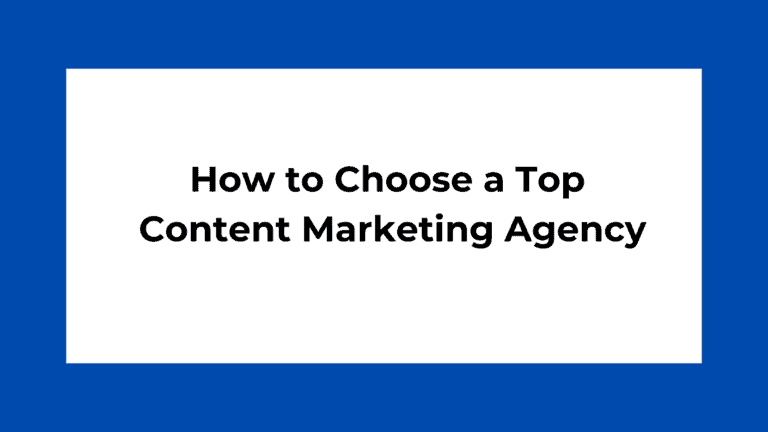The modern market is saturated in every area and every niche. Be it fashion, lifestyle, home, electronics, or crypto. If a new brand wants to gain a foothold in the market or an already existing brand wants to expand its consumer base, content partnerships are now the way to go.
A content strategy partnership is when a brand partners with another brand, agency, broadcaster, or influencer to develop creative content in any form. The content can then be shared by both parties with their respective audiences, increasing the overall reach and influence.
Content partnerships can be very helpful for brand growth and thus, are of importance for digital marketing agencies, SEO professionals, and experts. These partnerships can help a brand become more visible to consumers, which in turn builds brand awareness and trust. It ensures that the brand generates maximum traffic and increased revenue while costing less than many other means of promotion.
In this article, we will discuss how content strategy partnerships can help brands build trust and boost sales. We will also discuss how to identify relevant partners, establish partnership goals, and create and implement the required content.
Understanding the Target Audience’s Needs
Consumers will only invest in a product if they see that there is a need for that product in their lives. With the market saturated with similar products, a brand needs to highlight something unique about it and its products. A unique value proposition or UVP is a strategy that does the same.
UVP helps a brand inform its consumers how its products are unique, more beneficial, and/or more desirable than those offered by other brands. But first, a brand needs to identify the target audience’s pain points and preferences. SEO professionals can be of great help at this point as they can sort through relevant keywords to see what is trending and what is currently in demand.
Once the brand has identified what its target audience needs, it can devise a unique value proposition strategy that matches those needs. This can then be used to develop content partnership goals for maximum impact.
Identifying Relevant and Compatible Partners
Source: Freepik
Content strategy partnerships can only bring positive results for a brand if they choose relevant and compatible partners. If the partner’s audience will not be interested in the brand’s products or the co-created content, the partnership will be a waste of resources.
One needs to research and find potential partners with complementary skills and offerings. For example, a new makeup brand can partner with a beauty influencer to showcase and talk about its products. It is however very important to evaluate the partner’s reputation, reach and influence.
If a potential partner has a very limited reach, it may not help the brand. Similarly, collaborating with a partner who has a large audience but is known to be controversial will not reflect well on the brand. An ideal partner should be reputable and trustworthy with good reach and influence.
A partnership means both parties benefit from the deal. At this stage, it is important to determine how the collaboration may benefit both sides and see if the potential partners would be interested in the given benefits.
Establishing Partnership Goals and Objectives
A brand needs to establish clear partnership goals and objectives. What is the focus of the collaboration? What is the brand expecting from the partner? The shared goals should be defined while keeping the target audience in mind.
A brand also needs to develop SMART objectives. These can then be measured to see if the partnership is giving positive results or if a strategy needs to be revised. Setting relevant and time-bound objectives can help the brand see progress in real-time, which is undeniably useful.
Setting KPIs and partnership milestones is an important step as well. It will help the internal team keep a track of the progress that the brand is making in the long term. This will help them determine total revenue growth, profit margin, consumer retention rate, etc.
Crafting a Persuasive Content Partnership Proposal
Source: Freepik
A proposal that is not crafted well can cause confusion and lead the potential partner to misunderstand the terms. This can stall the creative process and cause unnecessary delays. A well-written, persuasive content partnership proposal may help a brand make sure that they secure the partnership without any issues.
A good content partnership proposal will have an introduction of the brand, a detailed partnership structure, responsibilities to be shouldered, and the expected outcomes. This will help the partner understand what is expected from them and give them an idea of what end goal the brand is looking forward to so that they can formulate the content accordingly.
The proposal should also present a comprehensive content creation and distribution plan. This will include whether the brand requires audio, visual, or written content, the tonality and/or aesthetics of the content, pointers that must be included in the content, how the content will be used and distributed, the rights that both parties have, etc.
It is also important to share the co-branding and co-marketing strategies. How will the brand’s promotion of its products/content help the partner? How will the partner’s reach and reputation help the brand? These are some things that need to be stated clearly.
Implementing and Managing the Content Partnership
Once the partner has accepted the proposal, it is time to formalize the partnership with an agreement. This partnership agreement should clearly state the terms and conditions as well as the duties, rights, and liabilities of both parties. It is important to make sure that both parties are on the same page before signing the agreement.
The next step is to develop a content strategy calendar or an editorial calendar. A content strategy calendar helps organize the content so that everything gets published on time. It includes content that needs to be released, scheduled promotional activities, and updates that need to be done. Having a proper content calendar can help the team organize everything without confusion.
Once the plans are finalized, the brand can then delegate roles and responsibilities to its internal and external teams. When all the team members know and are clear about their responsibilities, there would be no delays and the collaboration can move forward efficiently.
Since the partner is not a part of the internal team of the brand, they may want to timely corroborate their progress with the team. When two separate teams are working on a project, it is very important to set up a communication channel so that both teams can coordinate with each other and clear up any confusion. A dedicated and quick-responding channel can help things move smoothly.
Measuring Success and Optimizing Performance
Source: Freepik
Once the content is published, the brand needs to monitor the KPIs and metrics relevant to the target audience. These indicators will help the brand understand how the partnership has helped them. It may show up as an increase in the number of people checking out the brand, what percentage of those made a purchase, how much did the revenue grow, etc.
It is also important to periodically conduct partnership reviews and progress assessments. This helps both parties understand how the partnership has affected them and their brands and how much progress has been made in terms of the long-term goals.
As the data starts to paint a clear picture, it is time to make necessary adjustments to the content strategy partnership. If everything is going perfectly well, it means that the strategies are working. If something has gone wrong or hasn’t delivered the desired outcome, it can be discussed and changed as needed.
Scaling and Evolving the Content Partnership
If content partnerships have been beneficial, a brand may want to continue and expand it. The teams can explore opportunities for expanding the partnership’s reach. Scaling, establishing dedicated teams, and brainstorming new ideas can help.
It is also important to make sure the partner is intimated about the new developments and how the brand wants to move forward. Clear and timely communication can strengthen partner relationships which in turn would ensure a beneficial long-term partnership.
To evolve the content partnership, both parties can also co-create new content and projects for the target audience. This will help the audience build trust in the brand and thus, create brand loyalty. It can also open new partnership opportunities for the brand as more potential partners see that the dealings are reliable and profitable.
The brand can also set a budget and push the partnership content to audiences who may be interested but haven’t been targeted yet. This can further help the brand expand.
Case Studies: Successful Content Partnerships in Digital Marketing and SEO
A brilliant example of a successful content partnership is when Uber and Spotify partnered to elevate the experience of Uber users. With this partnership, users could book an Uber and enjoy the ride while listening to a playlist that they could control. This put both Uber and Spotify above their competitors and both gained more consumers.
Another great partnership is the one between Google and Luxottica. The hi-tech glasses sold by Google are very advanced but they don’t attract people who prioritize fashion. Luxottica takes those hi-tech but plain glasses and turns them into fashionable specs. This is a win-win situation for both brands.
The key takeaway from this is that if two brands or partners have complementary skills/offerings and a strategy is developed to combine the expertise of both to create something even better, it can bring great profits to both parties.
Conclusion
A content partnership is when a brand teams up with another brand or partner to co-create content that is mutually beneficial to both.
A successful content partnership strategy requires the brand to find its UVP and target audience. They can then research and find compatible and relevant partners. Once they establish partnership goals and objectives, they can send partnership proposals to their potential partners. If both parties agree, this can then lead to an agreement and co-creation of the partnered content. The content then gets promoted by both parties, helping it get more exposure. To make the venture more successful, the brand needs to continue monitoring the metrics and using the data to update its strategies.
Content partnerships are helping brands expand their consumer base resulting in increased revenue while also building brand loyalty and trust. It also helps other partners gain more visibility and profits. Partnering with the right party for a content partnership can push a brand to the forefront.
Why is content strategy important?
A content strategy helps you create meaningful and engaging content that attracts and retains your audience. It also ensures consistency, boosts brand visibility, and supports your marketing goals like increasing traffic, leads, or sales.
Is it possible to have a content strategy without regular content creation?
While regular content creation helps maintain audience engagement, a content strategy can still work if you focus on optimizing existing content, evergreen topics, and user-generated or curated content to keep your audience interested.
What happens if a content strategy doesn’t align with current trends?
While trends are important, a good content strategy focuses on your audience’s needs and long-term goals. Staying authentic to your brand and adapting trends selectively ensures consistency and relevance without compromising your strategy.
How do you measure the success of a content strategy if the results aren’t immediate?
Success is measured through key performance indicators (KPIs) like website traffic, engagement rates, conversions, and audience retention. While results may take time, tracking these metrics consistently can show gradual progress toward your goals.









